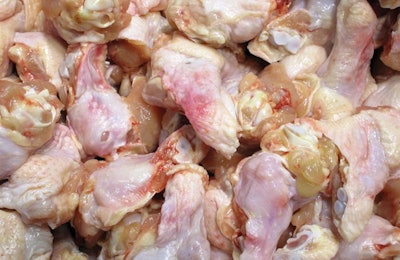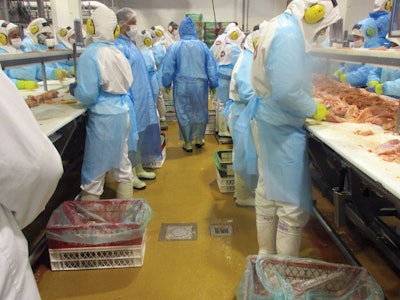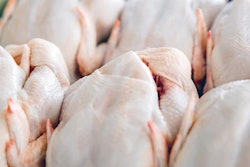
A great deal of care is given to broilers during rearing but, all too frequently, this concern comes to an end once the time for dispatch arrives.
This change in attitude can lead to an increase in condemnations and waste at the plant, dragging down final yields.
Condemnations can be seen as the removal of birds from the line due to quality issues, such as joint dislocations, bruises and scratches and bile spots. Depending on the seriousness of the issue, the whole bird may be lost.
Waste may be seen as any parts of the bird that fall to the floor and so cannot processed for sanitary reasons. This may be particularly important for some plants that sell into export markets.
Starting in the poultry house
A variety reasons may lead to otherwise healthy birds being condemned, stretching back to the poultry farm itself.
For example, checks on flocks made by farm staff may result in physical damage to birds if workers do not minimize disturbance. Walking quickly through the house can panic the birds and, in their efforts to escape, they may scratch each other, leading to cellulitis problems.
Similarly, when birds are ready for dispatch to the processing plant, the harvesting team must handle them with care.
Carrying birds by the legs results in intense wing flapping, and this exertion places enormous pressure on the pectoral muscles. The result can be broken blood vessels and the fracturing and splintering of the thorax bones. Both lead to bleeds, and this is particularly a problem in larger birds.
Placing birds into cages also presents risk if not carried out properly, and various issues may arise.
Placing birds, if held by the legs, into containers at the top of a stack may lead to the legs being twisted into positions into which they would not naturally move. The result of this is that, when birds are cut up, blood spots are seen due to broken blood vessels.
Containers for transporting birds must have lids as, without them, birds may try to escape. Should another container be placed onto the stack when a bird is escaping, broilers’ skulls may be crushed or their wings trapped. Should the latter occur, a bird will bleed to death en route to the processing plant.
But it is not only missing lids that can cause problems. The sharp edges of broken or split containers can also present a risk to birds. This risk increases during transport as jolts suffered during transport increase the chances of birds coming into contact with these sharp edges.
Greater compliance and monitoring of the period immediately prior to arrival at the processing plant, and including the feed withdrawal period, will prevent these issues.
Continuing care
Any issues that may have arisen with birds prior to cut-up will become evident once the processing team begins to work on the carcasses, and it is at this point that quality issues relating to poor management or equipment will become most apparent.
The team at the processing plant also has its own responsibilities for unloading birds and hanging them on the overhead conveyor with care.
Various issues impacting yield, such as intense flapping during hanging onto the shackles and while being transported to the stunner, can occur at this stage.
Other issues may include pre-shock, poor stunning and a consequent failure to kill birds, which results in them reaching the scalder still alive.

Keeping processing plant floors clean may reduce losses. (Eduardo Cervantes López)
Birds that fall to the floor at the processing plant will tend to be lost, and this is increasingly being seen with birds falling from the overhead conveyor due to the inclusion of heavier birds weighing more than 3 kilograms. This processing of birds of varying sizes can lead to them falling at various stages, including during stunning, in the bleed tunnel, at the scalder and during plucking.
Carcasses fall due to the greater leg thickness of these heavier birds, which stops them from being firmly anchored into the shackles. Modifying the shackles may prevent this, and there are prototypes being tested that are adjustable.
It is worth remembering that many of the birds that fall from the shackles will have to be sent to rendering, so reducing output of Grade A birds and increasing the volume of subproducts.
Should gizzards, livers or hearts fall to the floor, they will have to be sent for rendering and, similarly, if processed birds fall from storage bins, they too will have to be rendered. Keeping floors clean may reduce this loss.
Loss at this stage is of particular concern as value will have already been added to the basic product.
How to optimize feather plucking during poultry processing

















